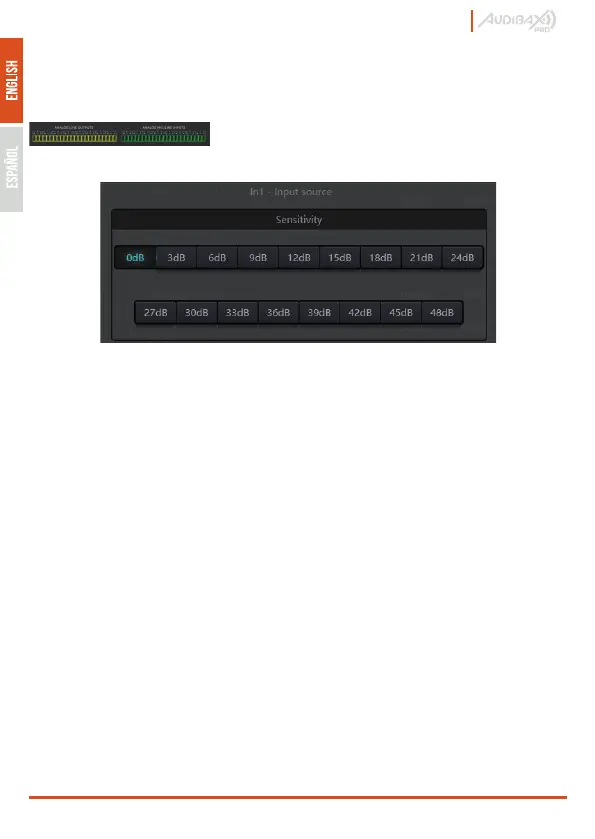Audibax M88 DSP handleiding
Handleiding
Je bekijkt pagina 6 van 106

www.audibax.com 4
M88 DSP / M88 DSP Dante
Audio input section
NexusX supports up to 8 (8+8 Digital in the Dante version) fixed analog audio inputs,
which can be connected via removable balanced euroblock connectors. The analog input
section accepts microphone or line level signals whose nominal levels are 0dBu, 10dBu,
20dBu, 30dBu, 40dBu and 43dBu. +48V Phantom power can be activated for each input.
The input and activation level of the 48V Phantom source can be easily adjusted with the
NexusX software.
Sección de salida de audio
Phase 1 of the analog output section refers to the D/A converter (DAC). NexusX adopts an
advanced 256X 24-bit upsampling converter. Like the A/D converter, it also uses a
multi-bit architecture for a wider dynamic range; Meanwhile, it is also equipped with
excellent distortion just like normal digital drive analog converter. Unity gain (0 dB) is set
via volume control and the analog output section is corrected to +4 dBu with a margin of
20 dB. That is, a 0 dBFS digital signal is equivalent to an output signal of +24 dBu. If other
signal levels are required, you can change the volume to achieve this.
Floating point DSP
The M88 (M88 Dante) device incorporates a SHARC DSP processor, enabling 32- and
40-bit floating point processing, which can be compared to the 40-bit floating point
processing of other devices. Floating point processing offers significant advantages to
users in terms of sound.
quality and flexibility.
Limitations of fixed point processing.
Fixed point processing has its own disadvantages. If there is a significant change in gain,
data loss or a more serious situation may occur, including clipping distortion. For
example, for processing a 24-bit fixed-point based audio signal, in some cases, if you
attenuate the signal to 42 dB, the new signal only includes 17-bit information. Due to
attenuation, 7-bit information will be lost forever. Even worse is the clipping distortion. For
a signal close to 0 dBFS, the signal will be clipped to 0 dBFS and audio distortion will
occur. Even if the signal level is adjusted below 0 dBFS using post-regulation, clipping has
occurred and distortion still exists. Fixed point processing can help create a headroom
greater than 0 dBFS. In doing so, it is necessary to abandon some parts. For example, if a
dynamic range of 12 dB (2 bits) is created, a 24-bit system actually only has 22 bits.
Bekijk gratis de handleiding van Audibax M88 DSP, stel vragen en lees de antwoorden op veelvoorkomende problemen, of gebruik onze assistent om sneller informatie in de handleiding te vinden of uitleg te krijgen over specifieke functies.
Productinformatie
| Merk | Audibax |
| Model | M88 DSP |
| Categorie | Niet gecategoriseerd |
| Taal | Nederlands |
| Grootte | 13294 MB |




